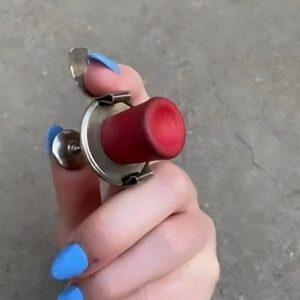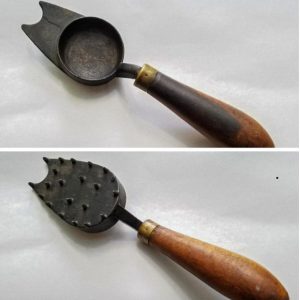In the formative years of the automotive industry, engineering was guided by simplicity, necessity, and user-friendly design. Among the many clever solutions of the era, the Fuel & Water Trap Glass Bowl Filter stands out as both practical and visually distinctive. This unassuming device played a critical role in ensuring that early automobiles ran smoothly, protecting engines from the unpredictable quality of fuel available at the time. Today, it’s more than just a component—it’s a treasured piece of motoring history.
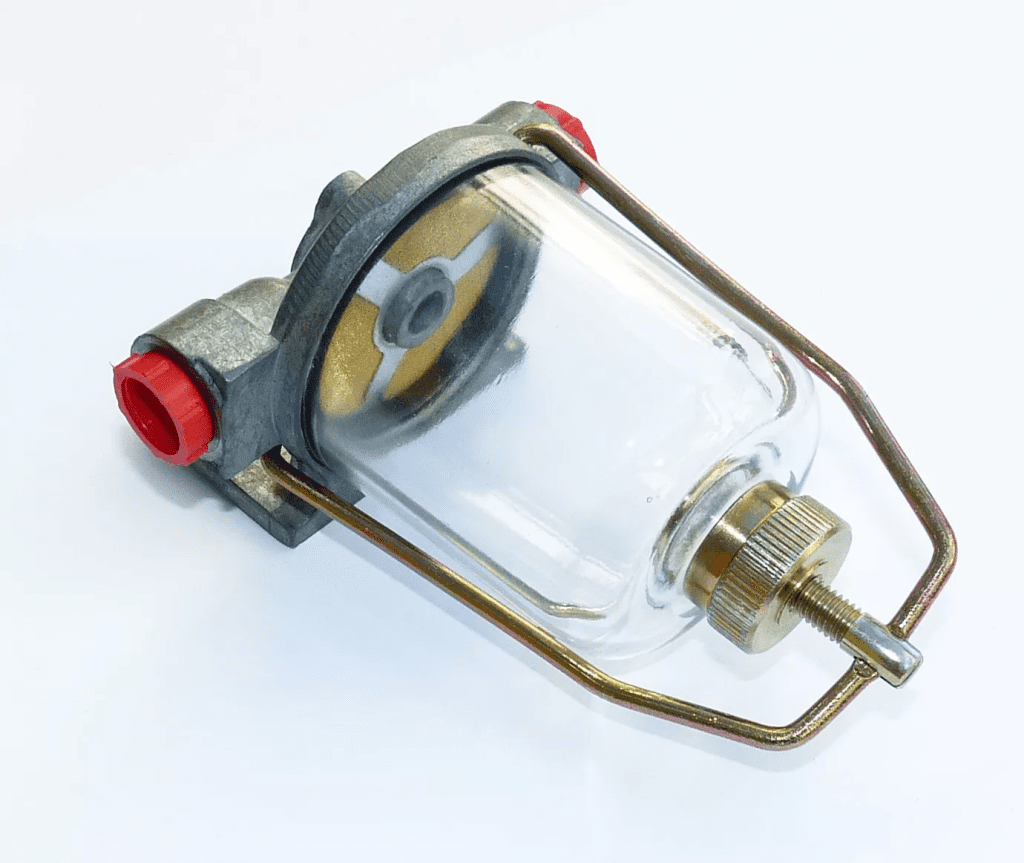
The Origins of the Glass Bowl Fuel Filter
By the early 20th century, the number of cars on the road was growing rapidly. But with poorly paved roads and inconsistent fuel storage methods, gasoline often contained dirt, rust flakes, and even water. In rural areas especially, fuel contamination was common and could cause serious engine trouble.
The solution came in the form of the Fuel & Water Trap Glass Bowl Filter. Built with a transparent glass reservoir, it allowed drivers to visually inspect the fuel before it reached the carburetor. This simple yet effective innovation trapped water and debris at the bottom of the bowl, keeping the fuel line clear and the engine protected.
Video: Durex Glass Bowl Filter – Fuel Flow
Why It Was Essential for Carbureted Engines
Unlike modern fuel injection systems, early carbureted engines were highly sensitive to impurities. Even a small piece of debris could clog jets or disrupt the air-fuel mixture, leading to poor performance or breakdowns.
The Glass Bowl Filter wasn’t just a barrier against contaminants—it was also an early diagnostic tool. Its see-through design let mechanics and drivers identify problems instantly. If the bowl showed sediment or water buildup, the owner could drain it using a small valve at the bottom, restoring clean fuel flow in minutes.
How the Glass Bowl Filter Worked
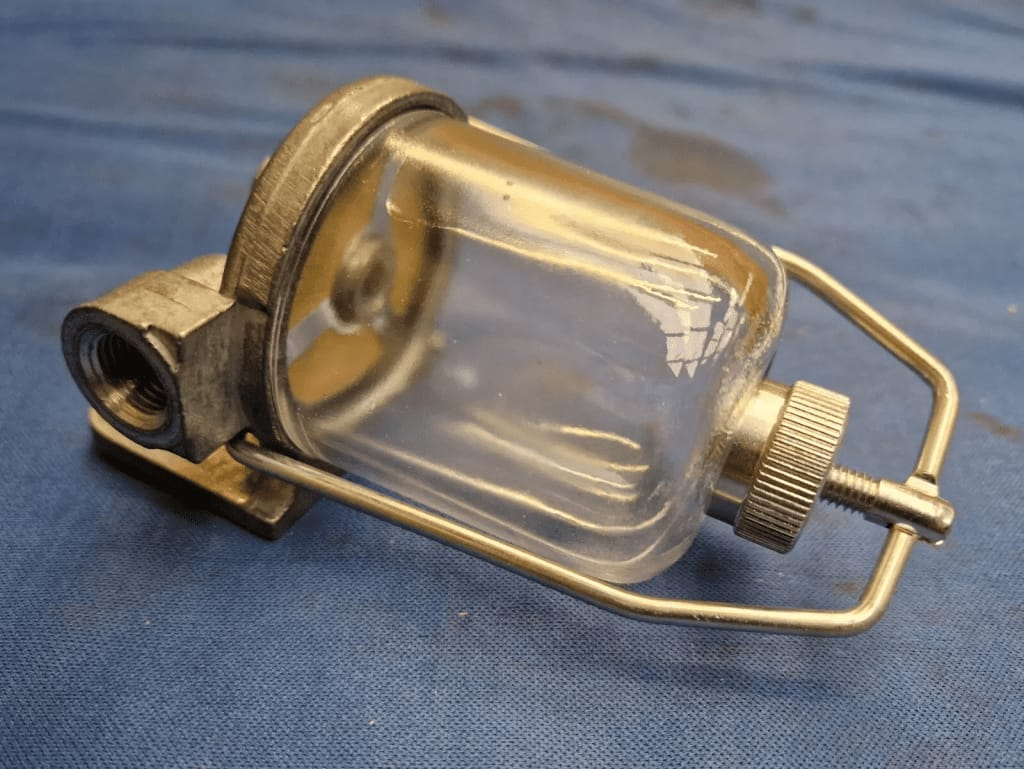
The operation was as elegant as it was effective. Fuel entered the glass bowl, and gravity naturally separated heavier particles like dirt and water from the gasoline. These contaminants collected at the base of the bowl, while the cleaner fuel passed through a filter element before reaching the engine.
The visual inspection feature meant that maintenance could be done on the spot. A quick check before starting a journey could prevent roadside repairs and keep the vehicle running reliably.
The Role of Fuel Filters in the Early Automotive Era
In the first half of the 20th century, fuel quality control was far less rigorous than it is today. Condensation in storage tanks, poor sealing, and metal shavings from containers all contributed to contamination. Without an effective filter, engines could stall, lose efficiency, or suffer long-term damage.
The Fuel & Water Trap Glass Bowl Filter became an indispensable safeguard, especially for long-distance travel or rural driving. For many motorists, it was the difference between arriving on schedule and being stranded by the side of the road.
A Legacy Cherished by Vintage Car Enthusiasts
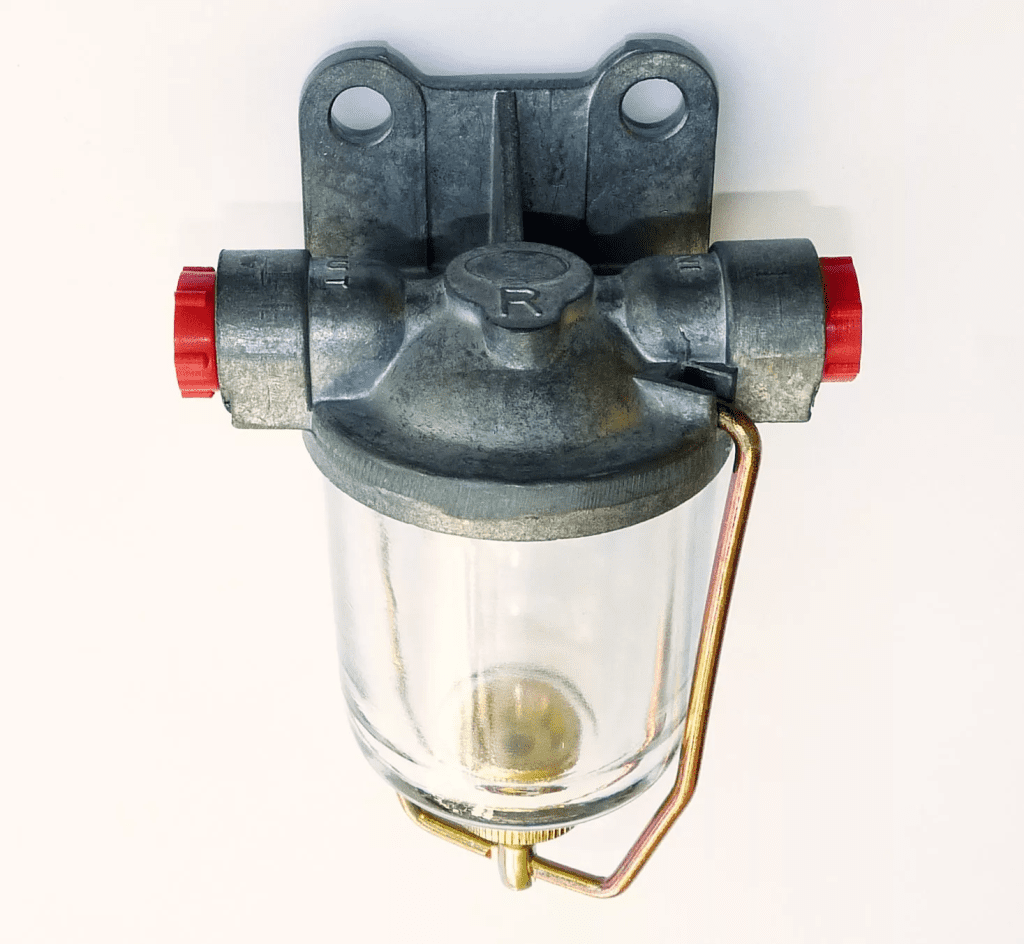
Modern cars use advanced, hidden filtration systems, but the Glass Bowl Filter holds a special place in the hearts of collectors and restorers. Original units are sought after for their historical authenticity, and their transparent design adds an appealing mechanical charm under the hood.
Part of the attraction lies in the hands-on maintenance culture of the past. Unlike today’s sealed, service-free filters, the glass bowl could be cleaned and reused, connecting drivers directly to the care of their vehicle. For vintage car owners, using one is not just about functionality—it’s about preserving a tangible link to motoring heritage.
Influence on Modern Fuel System Design
Video: Fuel Filter & Water Strainer from Holden Vintage & Classic
While modern filters are far more advanced, the fundamental principles remain the same: remove impurities before they reach the engine and protect performance. The Glass Bowl Filter’s combination of separation and filtration set the groundwork for these advancements.
Even though electronic sensors and high-pressure injection have replaced the mechanical simplicity of the past, the concept of visual inspection and proactive maintenance still inspires certain niche automotive designs today.
Conclusion: A Symbol of Practical Innovation
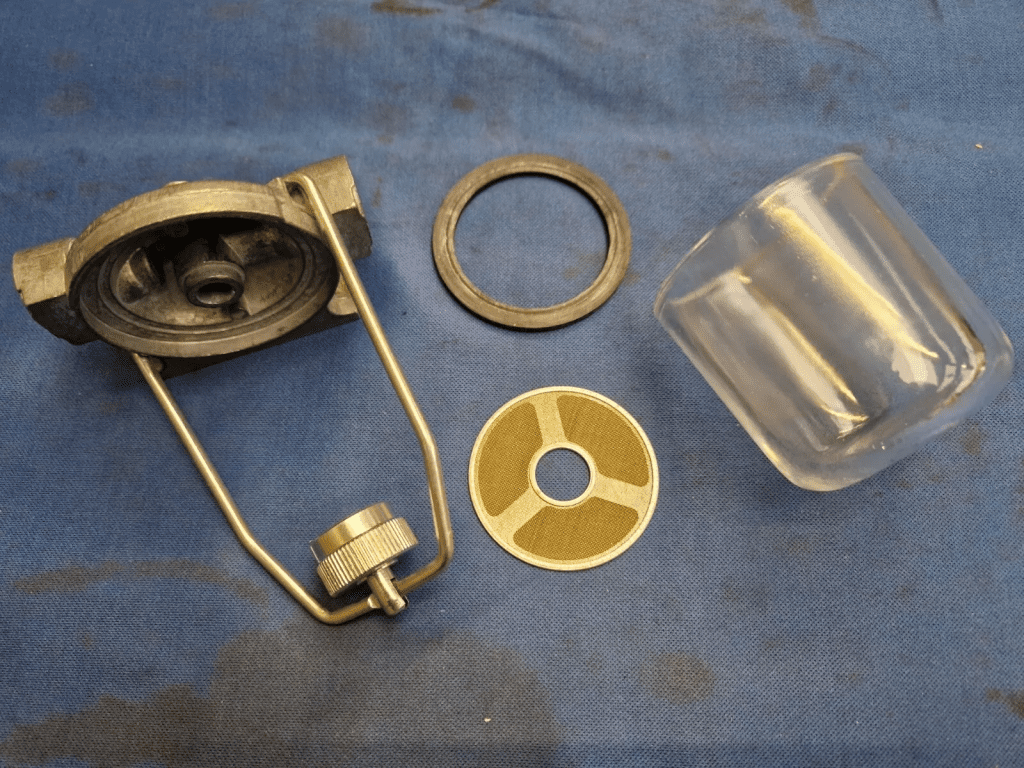
The Fuel & Water Trap Glass Bowl Filter is more than an antique part—it’s a testament to an era when drivers were deeply connected to their machines. Born out of necessity, it combined engineering practicality with visual elegance, ensuring that early motorists could keep their engines running clean and strong.
For modern enthusiasts, it represents more than functionality—it’s a piece of history, a reminder of the days when maintaining your car meant getting your hands a little dirty and taking pride in knowing every part under the hood. In a world of sealed systems and computer diagnostics, the humble Glass Bowl Filter stands as a symbol of mechanical honesty and timeless design.
